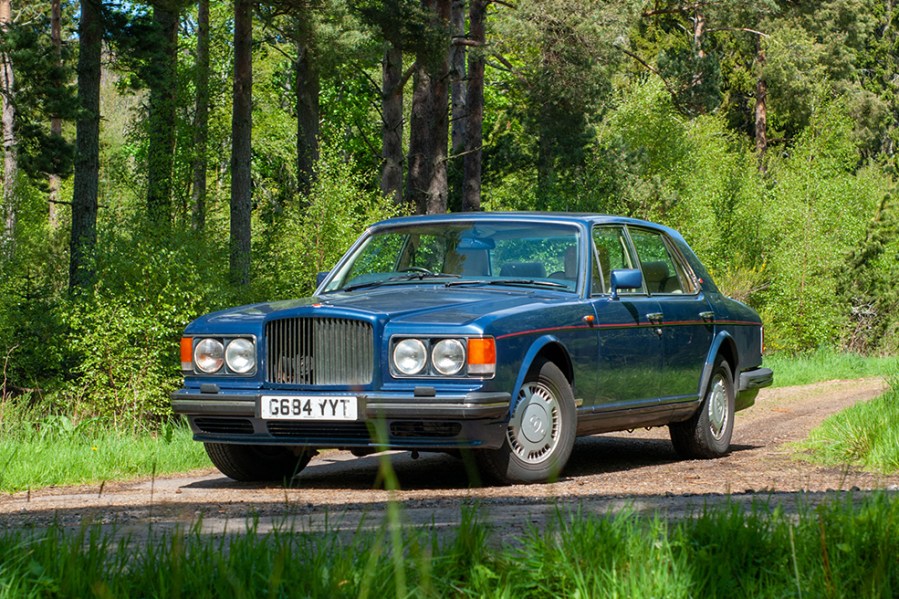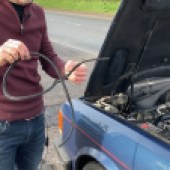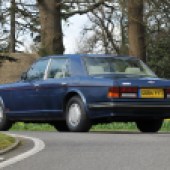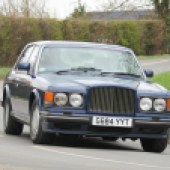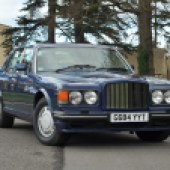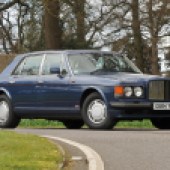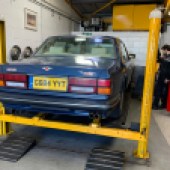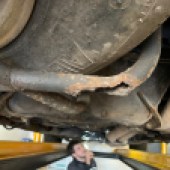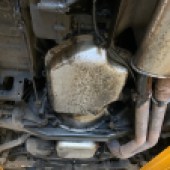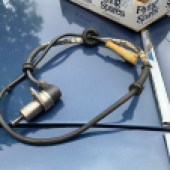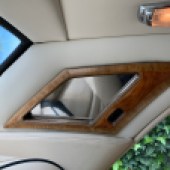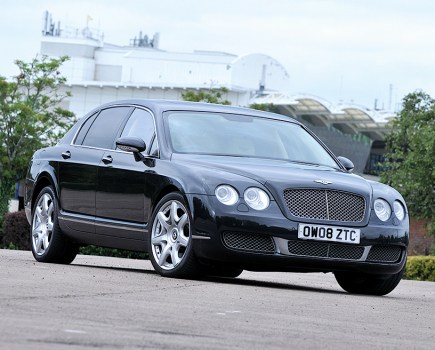Our Bentley Turbo R project turned out not to be quite as disastrous as some had anticipated. Here’s what it’s like to live with this British behemoth
Words: Paul Wager
Over the years every bit of advice I’ve ever given in print or received from a specialist concerning the Rolls-Royce Silver Spirit and its Bentley Mulsanne is that in order to avoid a potential money pit of nightmarish proportions, it’s essential to have a professional assessment before purchase.
All sensible stuff of course, which is why quite naturally we threw caution to the wind when acquiring our Bentley Turbo R project car and bought the car unseen on the basis of photographs and its low mileage of just 47,000.
The reasoning was perhaps more sensible: there’s little point in running a pristine Turbo R for a magazine project as the car would provide very little to write about, yet an example with low mileage should in theory avoid some of the really costly issues these cars can suffer from. We’d also looked at enough examples already to know where the bodywork issues are normally lurking and this one looked to be in far better shape than any of the others at a similar price level.
And so it was that a deal was done with the Bentley’s vendor which meant that early one February morning I found myself in our company car park trying to coax our Mk3 Escort 1.3GL project car into life, the Ford having been taken in part exchange.
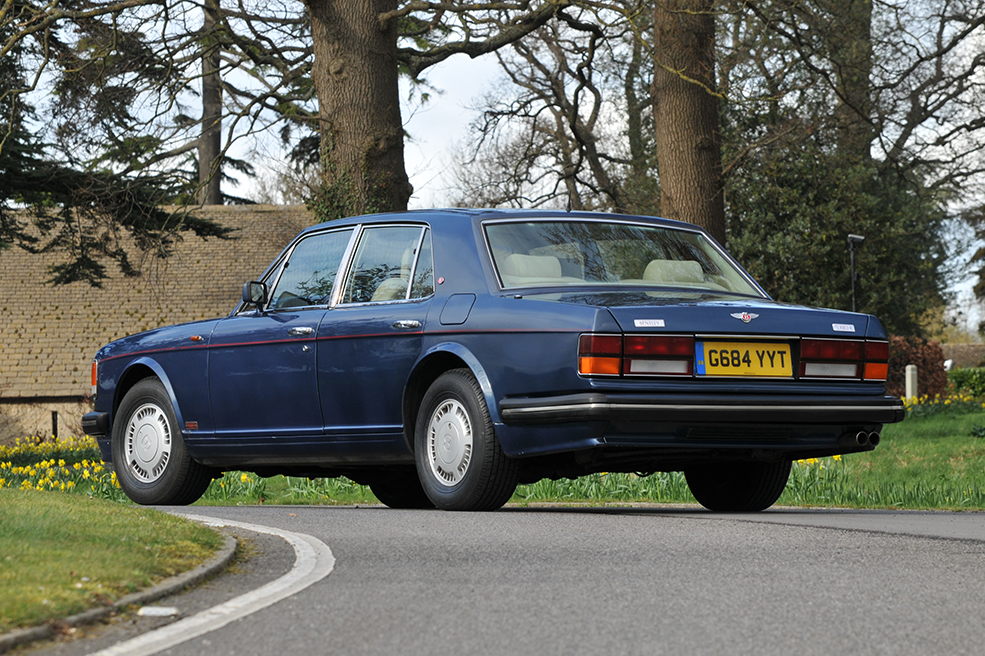
First impressions of the Turbo R were broadly good, although the fact that its hefty 2.5-tonne bulk meant it wouldn’t fit on the delivery transporter meant it had arrived under its own power, so winter road dirt was obscuring the true condition of the Cobalt Blue paintwork.
Poking round the car in person revealed what we’d hoped to find: a basically honest car which would benefit from some tidying. In a vain attempt to reduce the car’s weight, Rolls-Royce used aluminium door, boot and bonnet panels which do tend to suffer from reactive corrosion and there’s some evidence of this around a couple of the door handles, while the paint has flaked off the lower boot lid – a common issue, easily camouflaged by an oversize rear plate.
The front wings show some bubbling at their lower corners and there’s a nasty scab under the offside lower corner of the rear screen which will need professional attention but that’s about it. Inside, the car is clean and complete, with the piped Parchment leather crying out for a clean and recolour but the ‘highly figured wood’ (that’s what it says on the options list) looking lustruous.
One thing we just couldn’t look past were the Turbo R’s tyres: it was wearing a chunky set of Pirelli Scorpions, which are 4×4 tyres more suited to a Shogun. Tyres are a perennial problem with these cars, essentially since there’s no other vehicle on the planet which runs a 15-inch rim, can crack 140mph and weighs 2.5 tonnes, the result being that there’s just one tyre choice: the Avon CR27 which was developed especially for the Turbo R back in the day.
They’re expensive, generally retailing for anywhere between £300 and £400 a corner, with the added curve ball that Avon only makes them in small batches. Indeed, at the time of buying this car, many of the specialist tyre suppliers were unable to supply them at all, although project sponsor Flying Spares was able to source a set of four which arrived next day.
Our initial plan on delivery day had been to film a quick video for our Classics World YouTube channel and head round the M25 to Isleworth, where respected Rolls-Royce and Bentley specialist Nigel Sandell had volunteered to take a look at the car for us and provide an initial assessment. Yes, yes, I know: stable door, horse and all that…
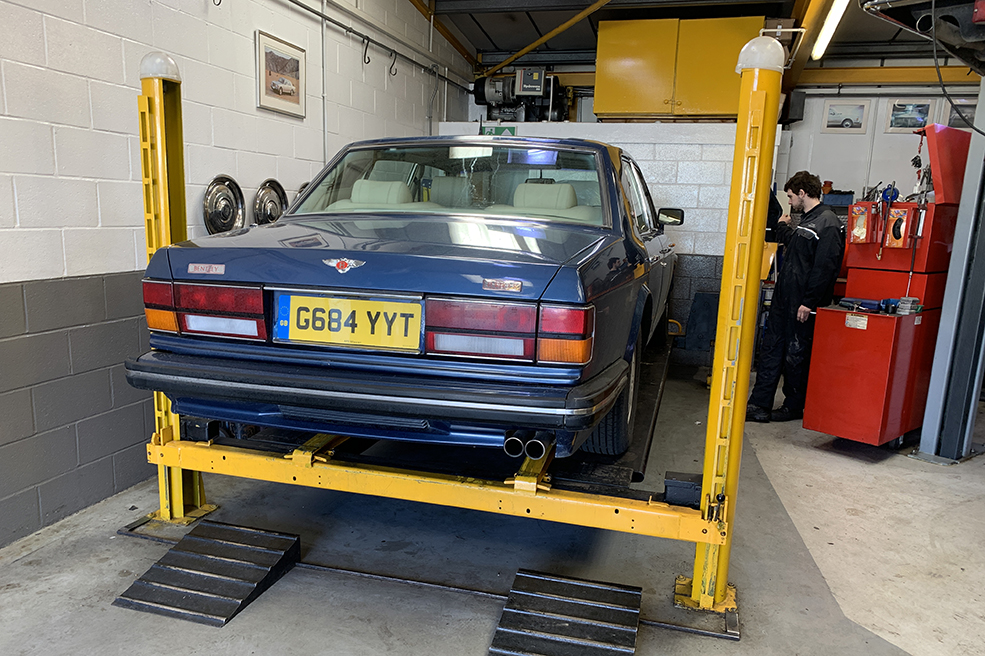
After pausing only to adjust the Bentley’s boot lock so that it actually closed and we weren’t in danger of scattering cameras across the motorway, we set out optimistically. Initial driving impressions seemed good, too: the car drove straight, wasn’t making any alarming smells or sounds and after a mile at the wheel I was feeling confident that we’d bought a good one.
Another mile down the road, I wasn’t so sure. Waiting at a steep junction, I’d assumed the burning smell wafting through the vents was the driver in front struggling with a hill start, but when I glanced down and saw the Bentley’s charge warning light glowing, I realised I was very wrong.
I pulled over into a layby and one look under the bonnet revealed the cause: the Turbo R’s V8 had thrown its alternator belt, the shredded state of which explained the burning smell.
Stumped for ideas, we called a colleague with local knowledge, who advised us that we were a stone’s throw from a general garage workshop, so trusting the battery get us that far, we duly found the place and blocked most of his forecourt with the 5.5m-long Bentley.
The proprietor was helpful enough and reckoned that if his supplier could source a belt he’d be happy to fit it for us while we waited, but my confidence rather evaporated when he asked me what kind of car it was.
By this point we already knew how the day would play out and sure enough, a Bentley alternator belt couldn’t be acquired that day, leaving us with a tricky decision: we couldn’t leave the car blocking the man’s business, so did we call for recovery or try to make it the two miles back to base on the battery?
Naturally, we decided to take the gamble but a delay queueing for a level crossing forced us to abandon the car in a car park, where it stayed overnight after the recovery people quoted a seven-hour wait. Local specialist Peter Sharman of Shadow Motor Cars obliged by recovering the car the next morning and the same day had it back in our car park with a new alternator belt fitted, plus a new battery to replace the time-expired and under-specified item it arrived with.
A few weeks later we returned to collect it, by which time Flying Spares had delivered a set of new Avons and a priority was to have them fitted, a job performed by my local garage where the boss is an enthusiastic Arnage owner.
Driving the car on the proper tyres for the first time, I was amazed at the transformation. It’s no exaggeration to say that I’ve never before experienced such a change in a car from a simple change of tyres: the road noise from the chunky off-road tread was gone, leaving the Bentley as refined as you’d expect, while directional stability was much improved.
A shame then that after manoeuvring out of the garage the ABS light started to glow intermittently, seemingly triggered by turning the wheels to full lock.
That apart, the car was driving really very well. The road tests of the day praised the big car’s uncanny agility and the proper tyres gave it the poise they were impressed by. This was the era when Rolls-Royce famously declined to quote an exact power figure, describing it merely as ‘adequate’ but thanks to the German market, we know that our injected 1990-spec car puts out 320bhp.
That might sound lacklustre for a 6.75-litre engine, but it’s backed up with a rather more impressive 455lb.ft torque at just 2400rpm and it’s this mighty low-speed twist action which gives the car its unlikely pace. The big V8 is redlined at just 4500rpm and it’s truly a lazy way to travel fast, rarely needing more than a gentle squeeze of the throttle to see the prow lift almost imperceptibly and following traffic to shrink in the mirror, all the while your passengers never looking up from doom scrolling on their iPhones.
Being a 1990-spec car, our Turbo R also features the Automatic Ride Control suspension, using an ECU which measures the road speed alongside the steering speed, the throttle pedal angle, the brake lights and three accelerometers. That information is then used to adjust solenoids on the front dampers and variable valve assemblies on the rear dampers, which vary the amount of oil being allowed to bypass the damping piston in three modes: normal, comfort and firm.
There’s no dashboard control, the system being designed to operate automatically and although it may be low-tech compared to modern electronic adaptive damping set-ups it works incredibly well: which is to say, it’s entirely unobtrusive which is as it should be. At low speeds, the big Bentley soaks up broken urban surfaces, while at higher speeds on a flowing A-road, the body roll is much reduced and it’s this which gives the car capability far beyond the confidence of most drivers, me included.
Like most relatively complex cars of the era, these Bentleys really don’t like being left idle and indeed, one piece of advice we received recently from a prominent figure in the Rolls/Bentley parts industry is that for every £1 spent on fuel, you’ll probably save £2 on maintenance. Accordingly, I tried to use the car at least every couple of days, to the delight of my 17-year old son and his friends who enjoyed the attention on the school run.
Despite regular use though, one recurring problem was the battery losing its charge, seemingly at random. Since a new battery was fitted alongside the replacement alternator belt, we knew we could rule out the battery itself and the problem seemed entirely intermittent: sometimes the car would still start after almost a week of inactivity, yet sometimes it would lose its charge overnight.

One clue presented itself when driving at night and I noticed a chink of light from the ill-fitting glovebox door. Clearly the wood panels have been removed previously and don’t line up properly, which quite possibly explained why the plunger wasn’t switching off the internal light properly. A quick adjustment plus the addition of a replacement rubber buffer solved that little problem… or so I thought.
A few days later the car wouldn’t start once more and since the 6.8-litre V8 requires jump leads and a spare battery dragging out of the garage rather than a little jump start pack, it was becoming more than a minor irritation. To add to the mystery, the Spirit-based cars like this have a built-in battery isolator in the boot which should in theory cut off all electrical consumers, but clearly in this case it wasn’t doing the job.
Resolving to do things properly, I removed the positive lead and connected a multimeter in series between battery post and terminal, intending to pull each fuse in turn until the current drain dropped to zero.
While doing this however, I noticed that an additional feed had been added to the battery clamp and by pure chance I heard the distinctive cheep of an ’80s mobile phone when I reconnected it. At this point I realised that whoever fitted the Motorola car phone back in 1990 had connected it directly to the battery, bypassing both the ignition key and the isolator switch.
Further investigation revealed that the phone was a typically nasty installation and the amplifier fitment in the boot is quite possibly the reason the carpeted trim panel is held in place by countersunk wood screws rather than the correct plastic clips. Needless to say, the phone was permanently disconnected, along with its speaker which was jammed inside the central console and the battery drain has magically disappeared. Just as well really, since pulling all the fuses one by one was going to take a really long time… there are quite a few.
Buoyed with success, I decided to tackle the electric windows which were perilously slow in the front and entirely inactive in the rear doors. Having obtained the factory service manual for the car, it was looked as if removing the door trims was the usual task of hidden screws under the armrest and internal catch with clips around the edge, so I set to.
Sure enough, removing the door card was a 10-minute job and peeling back the plastic moisture shield revealed the system in all its over-engineered glory.
Really, it’s no surprise that these cars tip the scales at 2.5 tonnes when you discover that all four windows are driven by chains – and big chains too, of the kind normally found on bicycles.
The upside of this battleship engineering though is that it was a simple job to lubricate the chains and sliding parts to get the windows gliding up and down smoothly. At least, that is on the front doors: the offside rear seemed to be suffering from what is a common problem in that the bush has separated from the motor, while the nearside was simply dead.
While I had the door cards off though, I was also able to address the woeful sound quality from what is supposedly a premium audio system. The stereo was almost unusable at any volume, with the speakers producing little more than crackling distortion and it was immediately obvious that the foam between the cone and frame had simply crumbled to dust. Wanting to get the doors back together, I didn’t fancy waiting for new speakers to arrive, so a stopgap solution was achieved by using contact adhesive to glue a replacement ring of foam into all four units. Result: fully functioning sounds.
Full professional inspection
With the car on the correct rubber and the repaired speakers keeping us up to speed on the traffic news, we could reschedule our visit to Rolls/Bentley specialist Nigel Sandell which had been curtailed by the alternator belt incident. Nigel had offered to give the car a proper assessment and so after a relaxing cruise up the M4, I found myself at his Isleworth premises where we waited anxiously as the car went up on the lift.
Nigel’s verdict was surprisingly reassuring: it looks as if we’ve lucked out with our lockdown purchase and our Turbo R is an honest example with plenty of scope for improvement.
The untidy bits of bodywork on the front wings are a common spot on these cars, while the dulled headlights are similarly frequent problem and easily replaced.
Similarly, the crusty paintwork around the number plate isn’t rust but reactive corrosion on the aluminium bootlid and is often solved by owners fitting an oversize number plate to hide it.
Moving under the car, we found plenty of evidence of preventative maintenance including what can only be described as an over-enthusiastic slathering of grease around the handbrake mechanism. Further forward, we did find cause for concern in the shape of an oil leak which had clearly been blown backwards at motorway speed over the gearbox and exhaust. The jury is still out as to whether it’s engine or gearbox oil, the plan being to steam clean the offending area and investigate further.
Elsewhere, brakes, wheel bearings and suspension all seemed sound, with no evidence of fluid leaks from the high-pressure braking and self-levelling hydraulics. A slight creak under braking was traced as being most likely due to a tired bush in the nearside control arm, but otherwise things were looking good.
Moving to the engine bay was where the Nigel’s extensive knowledge of these cars came into its own as he attached the pressure test gear to the hydraulic system to record its operating and reserve pressures. As it turned out, our car was still operating within safety tolerances, but one circuit wasn’t holding the pressure Nigel wanted to see, suggesting perhaps an issue with the rear self-levelling system.
Nigel also pointed out that the car’s history makes no mention of the distributor drive belt having been changed and so this should be considered as a priority. The Turbo R’s V8 effectively uses two separate ignition systems, with two distributors and one is driven from the other by a toothed belt. If the belt snaps, you’ve only got four cylinders to propel the car’s not inconsiderable bulk and the best you can hope for is that you might limp off the motorway.
Moving to the inside, we’d already noticed that the information display in the centre console is decidedly flaky, the trip distance having disappeared entirely, the gear selection indicator only very faintly visible and the warning lamps slightly erratic.
Nigel was able to confirm that the cure would be a rebuilt instrument panel and as so often with the British classic car industry there’s an electronics specialist doing just that. Rather usefully, said specialist also refurbishes the electric seat control units, which tend to fail when the onboard batteries for the memory function leak on to the circuit boards – most likely why our passenger seat is immobile.
Before we left Nigel’s premises though, we had one more important bit of diagnosis to complete: the erratic ABS warning light. This had started coming on intermittently ever more frequently and my hunch was that it happened after turning the wheel to full lock – indeed, it was possible to go days without it coming on provided no tight manoeuvres were required but that’s a rare day in the five-metre long Bentley.
As you’d expect, Nigel’s equipped with the proper diagnostic tester for the Bosch system but in comedy fashion the cable is too short to reach the back seat from the rear-mounted ABS module, meaning that one unlucky technician draws the short straw and gets bundled into the boot to read the display while a colleague drives round the car park.
It didn’t take long to realise that the front offside sensor was giving an erratic reading every time the wheel was turned to full lock, something which is usually due to a frayed wire to the sensor.

With the sensors being out of stock, Nigel waved me off with the cheery advice to have a go at replacing the sensor myself, since either way it would be a 30-minute job: if the old sensor came out easily, it would take just a few minutes to fix the new one in place, while if it was seized then after 30 minutes I’d be giving up. And they’re more often than not seized in place, the result of the sensor having a metal body which tends to corrode into the metal hub.
Sure enough, a few days later 30 minutes of grovelling under the car proved Nigel right. The sensor was going to need some serious persuasion to be removed, so I booked the job into my local garage where they could at least get better access with the car on a lift.
Meanwhile, aghast at the £310 cost of a brand new sensor (they’re specific to the Turbo R and are even handed left and right) I’d obtained a used sensor from project sponsor Flying Spares for just £110 which as usual arrived next day and was duly fitted by the garage, who had managed to extract the original sensor without going to the trouble of dismantling the hub.
This solved the problem nicely and with working ABS we finally had a Turbo R which I felt was safe enough to be passed on to colleague Rob Hawkins who got the dirty task of replacing the steering rack after a high-pressure pipe burst just as the car was driven on to the workshop ramp. That was one of the few big-ticket costs of the project, long with the rear calipers which were working fine but would doubtless have given big trouble next winter since the seals were badly perished.
Audio upgrades
The failed door speakers were repaired when the doors were dismantled to sort out the electric windows, but if I was to be using the car regularly I wanted to add a more modern sound system. Back in 1990, the Blaupunkt Bremen cassette unit was a top-end unit, but its lack of RDS meant constantly retuning the radio, while I also wanted to add a hands-free phone facility.
I had a suitable unit sitting in the garage and had assumed that it would be a plug-in replacement using the ISO radio plugs which were standard long before our Bentley was made… but it wasn’t that simple. Not only were the earth and power connections wired into a Blaupunkt-specific plug but the car had also been specified with an external amplifier mounted in the boot. This meant that the speaker connections were all wired to the boot-mounted amp rather than the head unit with a Blaupunkt-specific eight-pin DIN cable connecting the two.
After deciding I couldn’t possibly be beaten, I purchased a suitable cable online and broke out the soldering iron to make up a suitable plug-in adapter. The Blaupunkt BQA107 amp was fitted to several high-end cars of the day including several Porsches and US-based sellers will happily supply a cable for upwards of £50 plus postage, but after some trial and error I had a working cable for a total outlay of £7.
If any Turbo R owners out there want the wiring details then just contact me at paul.wager@kelsey.co.uk and I’ll happily forward the diagram.
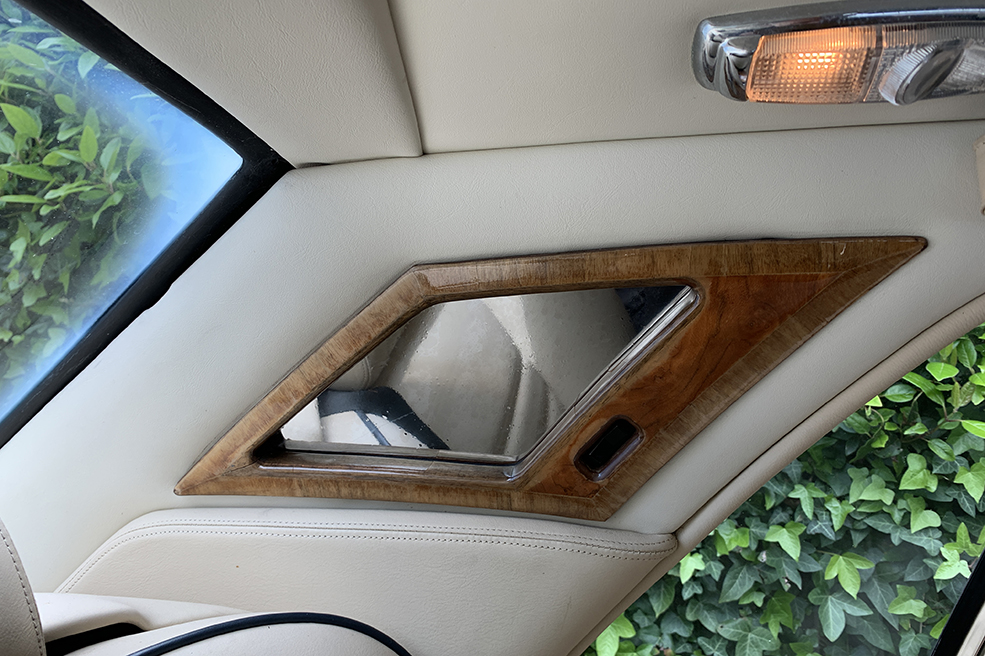
Interior rejuvenation
Our Turbo R was specified with Parchment leather piped in dark blue and although it would have looked stunning when new, it’s essentially a very light beige and the last 30 years haven’t been kind to it.
The rear seats still look good and the front seats are respectable enough, but one thing which really let the car down was the driver’s door armrest. Clearly, a succession of elbows over the years had worn away the colour but I know from experience that it’s an easy task to sort it out.
One call to leather specialists the Furniture Clinic saw a bottle of leather colourant delivered, colour-matched to a sample which I’d provided from the surplus material under the back seat. We’ve used Furniture Clinic’s products before and knew what an improvement could be made, but rather than tackling the entire car I elected to start small with the offending armrest.
After cleaning the part, I masked it up and used a hobby airbrush to apply a couple of coats of the Parchment colour and after it had dried I applied the Cross-Linker to protect it and give it a satin finish.
The result was an armrest which was completely transformed and gave me the courage to tackle the rest of the interior – eventually. After all, there is quite a lot of it…
One of the first things we’d noticed when the car delivered was the failed silvering on the mirror fitted inside the rear quarter panel. My 14-year old daughter was particularly aggrieved by it and although a replacement part would be the ultimate solution, I was curious to see if a quick win could be had. I already had a roll of mirror silver glass film – the kind you see on office buildings – and reasoned that it could be applied to the front face of the mirror to improve its appearance until such time as we could source a replacement.
Surprisingly, the plan worked: the mirror is easily removed from its veneered surround and a piece of film was cut to size and applied to the glass before reassembling it. No, it’s not quite optically perfect but it looks a whole lot better and has cheered up the whole cabin.
A Scottish road trip
Words: James Howe
Our Bentley Turbo R responds badly to sitting around; it’s best used at least once every week to keep its various complex and obtusely engineered systems ticking over. That schedule has been maintained by Rolls Royce & Bentley Driver editor Nigel, but it had been a while since the car’s legs had been more thoroughly stretched. With a big trip planned, I offered my services.
The costs attached to keeping our Turbo R fuelled have spiralled in recent months. With a 108-litre tank’s worth of super unleaded estimated I was a little apprehensive, and adding to the trepidation was the Bentley’s iffy fuel gauge. The DIP unit – the plastic housing for the two main dash instruments – has been out of the car twice to have its cooper-track electronics sorted out, but to no avail. The fuel sender and gauge are perfectly functional; the unit that receives and interprets the signal for display is not.
Further compounding the issue was another of the Bentley’s gremlins. The fuel flap – operated by a button on the centre console charmingly labelled ‘Refuel’ – doesn’t open without assistance. A pre-journey inspection revealed that a de-sprung spring is the culprit, the workaround knack involving wedging of the fine leather keyring into the closed flap to give the mechanism more pop – a manoeuvre that gets some funny looks at the pumps.
Speaking of looks: the Bentley gets a lot of them. It has never been a shrinking violent and feels particularly at odds with today’s climate, but passers-by still seem to enjoy what is sure to become a vanishingly rare sight if current trends continue. It even passed the city driving ‘after you’ test at junctions.
Short of using a very un-Bentley length of wood as a dipstick, the only way to tell how much fuel was in the car was to brim the tank – thankfully, this didn’t require the sale of any internal organs. From here, the age-old combination of scrap paper, pen and odometer were used to keep track. Over some 300 miles (and presuming the odometer isn’t overenthusiastic) the end result was 22.9mpg; not bad for a 2.5-tonne, 6.75-litre dinosaur.
My light-footed cruising probably had something to do with that figure, although exercising the Turbo R on some very familiar Scottish B-roads revealed a car that’s much happier being pushed than expected, making restraint very difficult at times. It’s not quite a sports car but there’s a lot to love about its loping character, huge grip and incongruously accurate steering. Even with our Bentley’s sprinkling of issues, it’s hard not to fall for it.
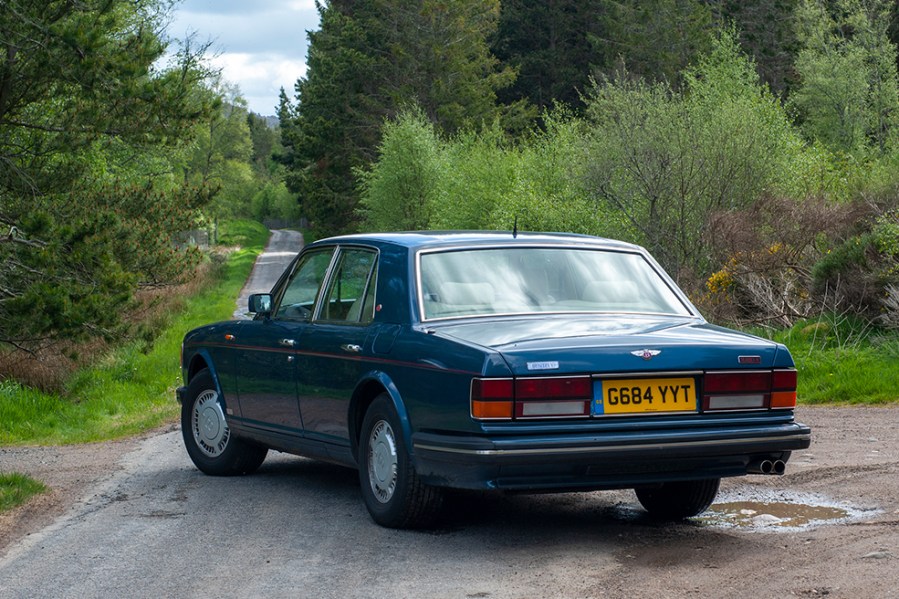
Our verdict
Do we regret our Bentley Turbo R purchase? Not a bit. Fuel economy is actually better than something like a P38A Range Rover or V12 Jaguar and if you’re prepared to get stuck in yourself, then these cars are surprisingly straightforward for the DIY owner. Just get used to using a bigger hammer than you’re used to.
The Turbo R may appear conventional in many ways, but Bentley very much ploughed its own furrow when it came to the detail engineering; it’s the hidden faults which will trip you up financially, and which mean the modest cost of a specialist inspection can often be repaid several times over if it directs you to the right car. It is very important to buy well in the first instance!

